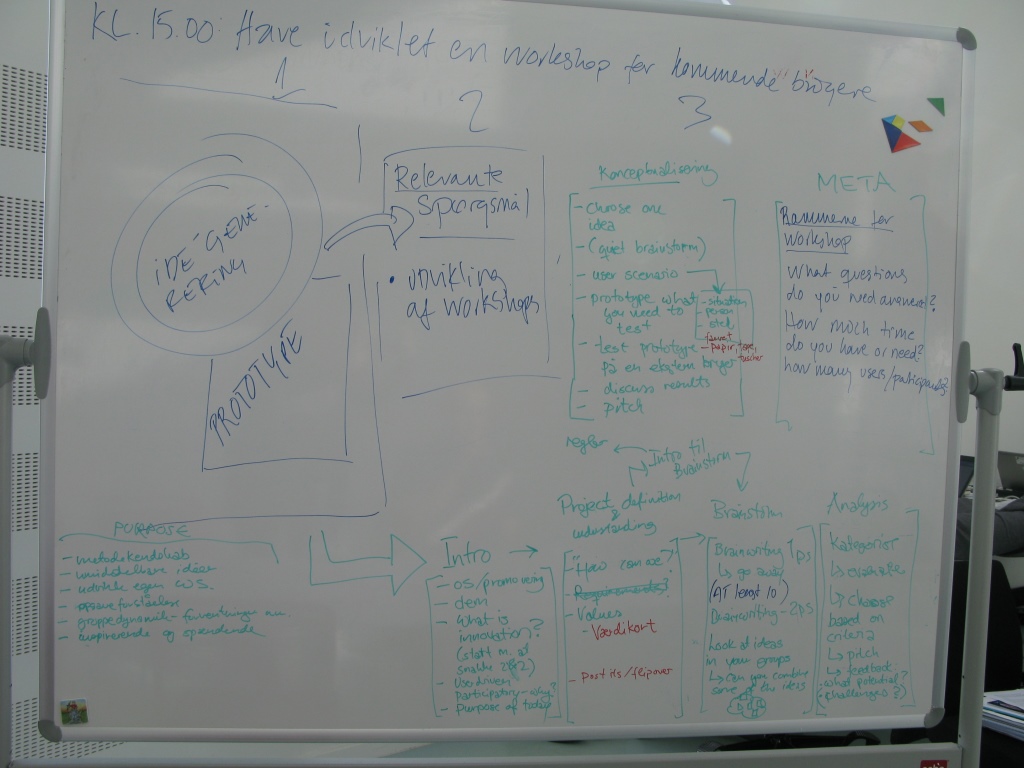In many innovation processes it is essential that one has considered the potential user or customer role during the development phase. Therefore, it can be a good idea to have the students design and facilitate a workshop with stakeholders relevant to their idea/concept/project.

Method DESIGN A WORKSHOP

Instructions
First and foremost, the students need to figure out what they need to research or develop during the workshop. Clarifying the nature of the workshop can help to make it a more rewarding experience for students. Consider e.g.:
- Is the problem area clear and of relevance for all parties? Or should it be expanded upon?
- Have the students produced hypotheses about the problem area that need to be confirmed or dismissed?
- Which considerations have been made about the implementation phase and should these be included in the development of the workshop?
- What should the workshop be called?
When selecting workshop exercises/methods:
- What should the method focus on?
- Should each exercise lead to individual reflection – or is reflection best done as a group?
- Should an interview guide be developed?
Relevant for all workshop designs:
- How much time should be allocated for the workshop?
- How many people are participating and who are they? Would it help to invite other stakeholders?
- How should the workshop be documented? And during the workshop, who is responsible for what?
The workshop format is usually a facilitated process. Therefore, it is a good exercise for students to design and manage workshops. After the workshop, the students can make use of the clustering method to organize data. Most of the methods in this innovation toolbox can be used for workshop design.
Preparation
Consider – if possible – to schedule the time and date of the workshops with relevant stakeholders related to the students’ project challenges before the course starts, as it might otherwise be difficult to arrange.
Downloads
Downloads
Downloads
Downloads
Downloads
Downloads
Sources
Wates, N, 1999, The community planning handbook: how people can shape their cities, towns and villages in any part of the world , Earthscan, London.
Brandt, E & Messeter, J. (2004). Facilitating Collaboration through Design Games. In: Proceedings of the eighth conference on Participatory Design: Artful integration: interweaving media, materials and practices. vol. 1, ACM Press, s. 121-131.
